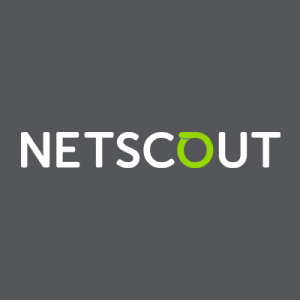Our IT department is responsible for maintaining key systems and applications for all corporate locations, more than 500 stores across the U.S., and the e-commerce retail websites. Not having insight into these key applications and the underlying network infrastructure that supports them meant teams were always in a reactive mode when isolating and fixing problems.
As a member of the networking team, we’re responsible for monitoring performance of more than 100 custom applications, store circuit performance, database applications, key business applications like Exchange and Lync, client access, vendor networks and more. If we can’t access the needed network and application performance data, we can’t isolate and fix the problem. Teams just finger point and the guesswork begins to try and isolate root cause. And the worst part, while this is happening, the business is being negatively impacted.
As a matter of fact, during the holiday season, our online retail site experienced sporadic performance issues. Without solutions in place to proactively monitor performance, the IT department struggled to isolate what was causing the problem.
We knew this could never happen again, and it was the tipping point for us to find a solution to help solve the problem. We needed complete insight into the application performance layer so we could identify if it was a network or application issue. We also needed the ability to generate hourly reports for key executives and managers so they could monitor site performance.
In a nutshell, our company lacked visibility into network and application performance. If you can’t see it, you can’t manage, which means when problems happen, you can't easily fix them. This creates a big problem for IT and a bigger problem for the business. We needed to take off the blinders so IT could become a strategic resource.
To meet these challenges, we selected Fluke Networks’ Visual TruView, a unified application and network performance monitoring and troubleshooting appliance. It leverages key data sets such as stream-to-disk packet storage, application response time, transactional decode, NetFlow and SNMP, to present performance analytics through a single visual dashboard view. It eliminates the need for swivel chair correlations and gives teams the ability to quickly drill down into packet-level details if needed. With intuitive guided workflows, we’re never more than a few clicks from isolating performance problems.
There are only two solutions I keep up and running at all times, and Visual TruView is one of them. It gives me complete visibility into the application layer and when problems emerge, I can identify the source and work to fix it before it has an impact on the business. We can monitor all of our key sites and applications easily, immediately see if and where a problem is occurring, drill down into extensive details if needed, and isolate and fix the issue in real-time. It’s our eyes and ears for the network, and it’s made the engineering team shine.
Since deploying Visual TruView, our IT team now has complete visibility into application performance and can proactively manage the network.
TruView has allowed us to completely revamp site performance for the website. We use the full map view to manage all sites and can easily see when performance is degrading or if there is an outage – and immediately identify if it’s an application or networking issue. The information is easy to process and the search function allows us to quickly get graphs for usage, top conversations and more.
To make sure the networking team keeps on top of all performance issues, we created custom monitors and hourly reports that automatically get pushed to key team members and executives. This helps track everything from general performance data for key business applications to site transactions associated with e-commerce. If an issue emerges, the teams can instantly work to remediate.
From the moment TruView went live we had instant visibility into pressing issues and were able to immediately fix problems and do application rollups. And while the networking team owns access, we also provide access to the application team so they can instantly work on response time issues and drill down into individual connections that may be causing the problems. No more finger pointing, just data that helps isolate and fix a problem.
We also find Visual TruView simple to use. I can easily set alarms for application performance, site performance, network performance and more. There’s no need to manually correlate data and I can instantly prove or verify if a problem was the result of a networking issue.
The workflow is very logical and easy to use, and because it pulls all the data sources we need, we can get as granular as needed to isolate an issue. Every night it seems some issue occurs, whether that’s a server failure or a sales query, and TruView makes it easy to log in, put in a source destination and get results on any activity and how it impacted performance. It’s a critical tool for our day-to-day management of performance.
I can't imagine doing my job without Visual TruView. Previously we couldn’t provide concrete answers on performance issues. Now we can…and with extensive detail, which allows us to prove the ‘what’ and ‘why’ of a problem.
*Disclosure: PeerSpot has made contact with the reviewer to validate that the person is a real user. The information in the posting is based upon a vendor-supplied case study, but the reviewer has confirmed the content's accuracy.



Good review, and I picked up a new idea. Delivering hourly reports may not be necessary for my current position but I can at least test the idea with the powers that be. Many monitoring systems will allow scheduled report delivery, and for critical systems that may be worthwhile!